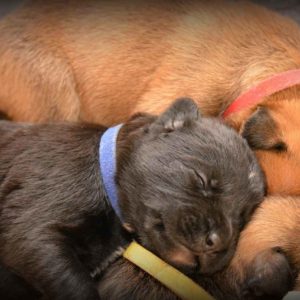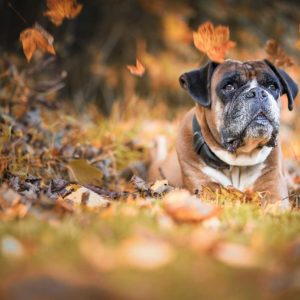
Boxer Dog Training Tips
Boxer dog training can be the perfect way to form a strong bond with your new pet. These dogs are loving and very loyal to their owners. They make perfect family pets, and will be protective when the time warrants, and welcoming to others in appropriate situations. The training process isn’t too different from other pets, but some areas need to be closely monitored.
What is Training a Boxer Like?
When it comes to boxer dog training you will quickly find the entire experience is more of playing games with them rather than vigorous and intense training.
The young boxer is energetic, very playful, and will quickly learn games taught to them. You’ll use this to your advantage when you go in depth with their training. Making it a fun experience for them allows the opportunity for quicker results.
It is important to note that since this breed is extremely intelligent they can become stubborn. They have an understanding of what is expected of them, but at times they will do what they want to do when it fits into their schedule.
Patience is essential with this breed. Remain firm and don’t let him get away with not responding, otherwise he may determine he is in control.
At the two month mark your boxer will begin to try and claim dominance, during this time he will nip and bite at you. Be firm and hold your own.
Never hit the dog for biting you, this creates a negative environment. Correct him calmly with a positive approach. This is very important part of boxer dog training.
Positive Reinforcement Strategy
With positive reinforcement, you are teaching your pet there is a reward to listening to you. During boxer dog training when your dog does an action or responds to your command successfully you need to reward him.
This can be done by providing a treat, or giving him an item that he enjoys. It can be as simple as a hug, or as complex as play time with a new toy. Ultimately, the best item him something he’ll enjoy.
On the same token, if he doesn’t respond or ignores your command hold firm and keep commanding. During this time he may become stubborn you can show him the reward for the correct action and this will normally solve the situation.
Housetraining & Crate Training
During the housetraining process, the best results will begin by using Crate Training. For crate training you start introducing him to the very basics of this concept. Turn it into a game for him to go inside and explore, as he enters the crate say “go into your crate”. This will add a verbal command to the action that he will be able to use in the future. Don’t ever place your puppy into the crate as a punishment; otherwise they will assume it is a negative place.
You can then ask them to begin going into their crate from longer distances. After awhile they will be able to reach it with a simple command, and understanding on where they are going.
When they have an understanding that their crate is part of their home, your puppy will learn not to use it for the bathroom. You’ll use that concept into the remainder of the home. As they run around the house and play you’ll begin to notice their behavior before they need to use the restroom.
Some dogs will begin to sniff and whine, others will begin to do an agitated dance, but since every pet is unique no one rule will work for the next. Learn the signs and the potty training process becomes a snap.
When you notice the signs you can simply state “need to go potty?” as a question and the dog will learn when you ask this that you understand that there is a need to use the restroom.
From this point, bring them outside and set them in an area you would prefer them to use. As they go to the bathroom, state what action they are doing and praise them. Either with good “pee” or “poop” depending on the term you want to use with them.
If you are in a hurry and you take them outside you’ll be able to use those words to your advantage by asking them to perform the task quickly. Another important part of boxer dog training is socialization.
Socialization
Socialization is essential for your young dog to help them behave better around other people and pets. A good way to begin the process is to introduce them to a dog park after they are old enough to have had their shots.
During this time, you can encourage them to play friendly with other dogs, and praise them when they play nicely with each other. Allow them to realize that other dogs are friends and not enemies.
The same needs to be done with people as well. Invite people over who enjoy dogs, and let them know you are training your dog. Reward them for being friendly to people you welcome into your home.
At the same time, encourage barking when someone pretends to break in. This will let them see a difference in the way they need to protect you.
During boxer dog training you need to make sure they also understand not to jump on people when they arrive home.
This can be scary and harmful to children and the elderly so teach them that when they meet someone new they shouldn’t jump. Simply press lightly on their paws backwards to set them down. It will be uncomfortable for them, and they will remain on the floor.
Leash Training
When you first introduce the leash and collar allow the dog to sniff and smell it. This will let them become comfortable with the items around them. Next, place the collar around your pet’s neck and allow them to take a moment and adjust themselves to wearing it. During this time make sure you can place three fingers between the collar and the neck to ensure they can breathe.
You will then need to teach them how to walk with you on a leash. Take a moment and go out onto the main driveway of your home. During this time begin to walk at a slow enough pace that they follow.
Ensure they remain on the left side of you and maintain your pace. Stop several times and say “stop” when they continue and lightly tug on the leash.
Next, allow them to speed up, get a distance from you, tug on the leash, say “heel”, and have them slow down to your pace. This process takes some time, but once it is done you will have a dog that obeys on the leash.
Obedience Training
Obedience Training is essential for training your boxer. Often the best way to go about this type of training is to attend a local class full of other dogs to help with socialization.
These courses will teach the basics such as sit and stay as well as other basic commands. If want to do it yourself you may want to try clicker training.
Clicker Training
Boxer dog training with a clicker allows the dog to recognize when they do something right by hearing a clicking sound. During these exercises you’ll ask the dog to sit and instead of giving a reward you’ll simply click on the clicker and they will know they performed the correct action.
Common Behavior Problems
During your boxer dog training you will find some common behavior problems associated with this breed. These include:
* Aggression – If not treated when they are young, they will become aggressive and attempt to dominate the situation.
* Independence – They will go and do their own thing without regard to their owners at times, even doing things they know they shouldn’t do.
* Stubbornness – They will believe they know what needs to be done rather than what you are asking them to do.
Tips For Training Older Dogs (2+ years old)
If you bring an older pet into your home the boxer dog training can be a little more difficult. They will have established ways of doing things that you may not like.
You’ll need to exercise more understanding during training and focus more on the negative aspects they have rather than what you wish they could do.
Back to Boxer-Dogs-Guide Homepage


